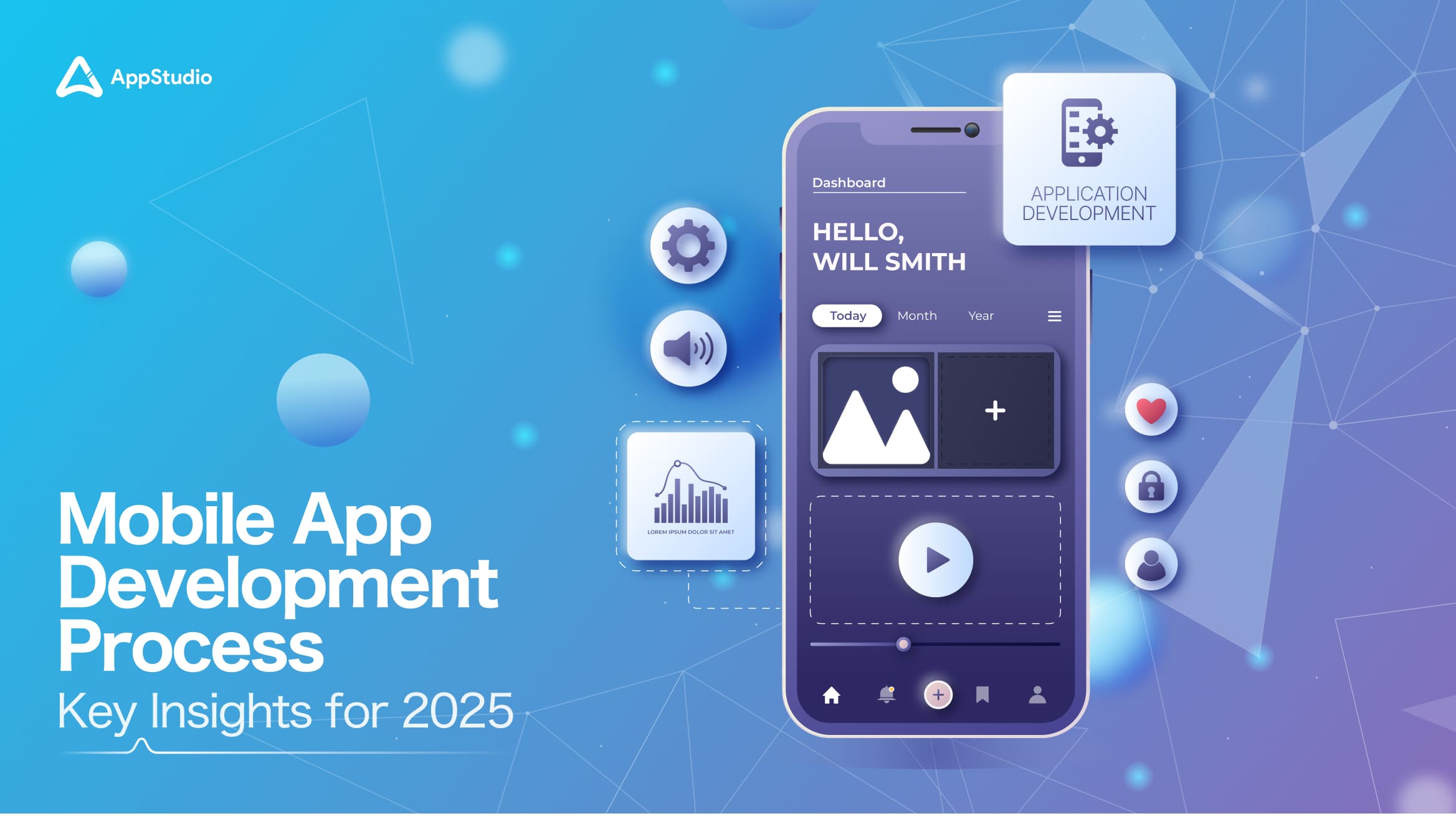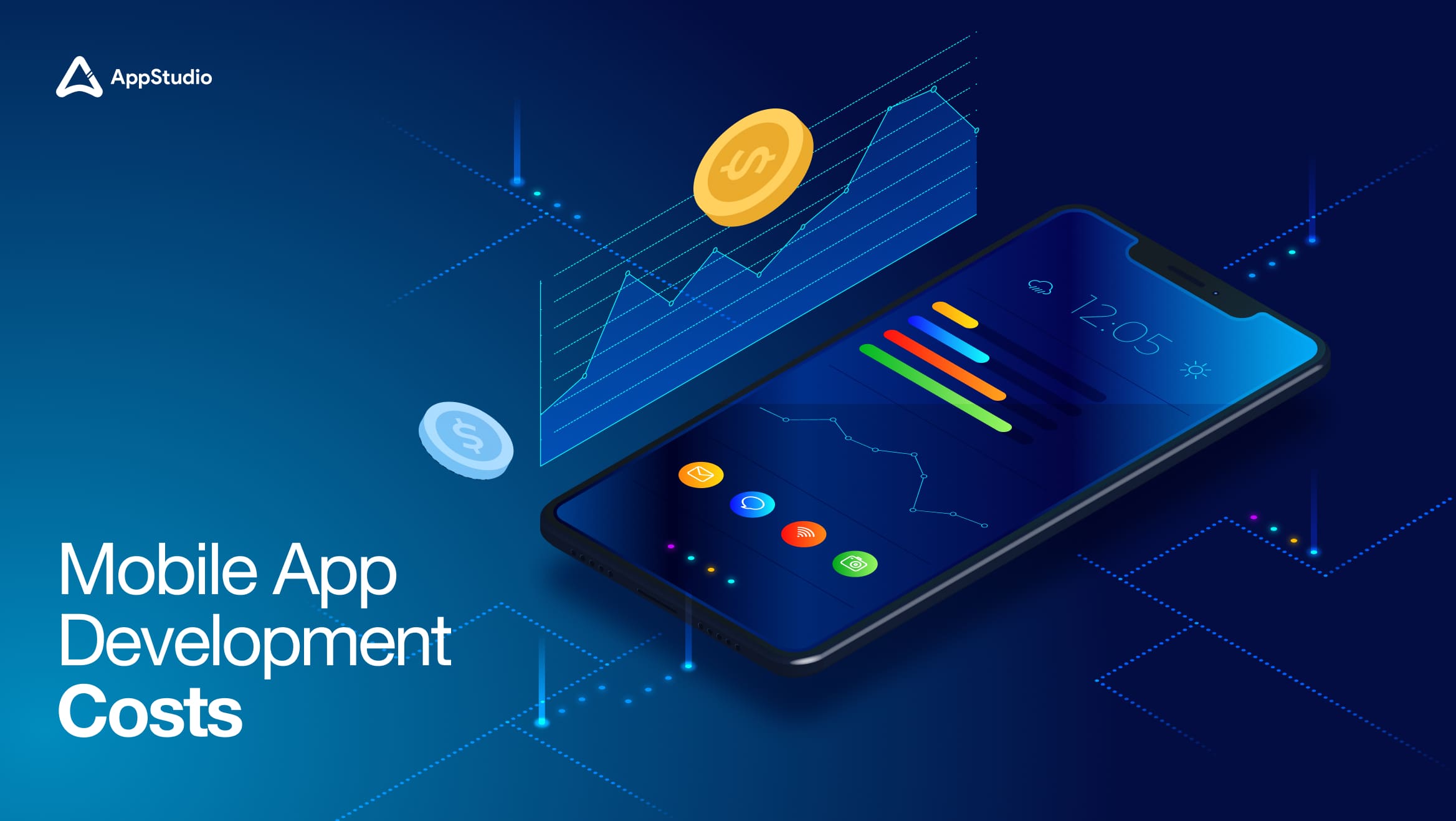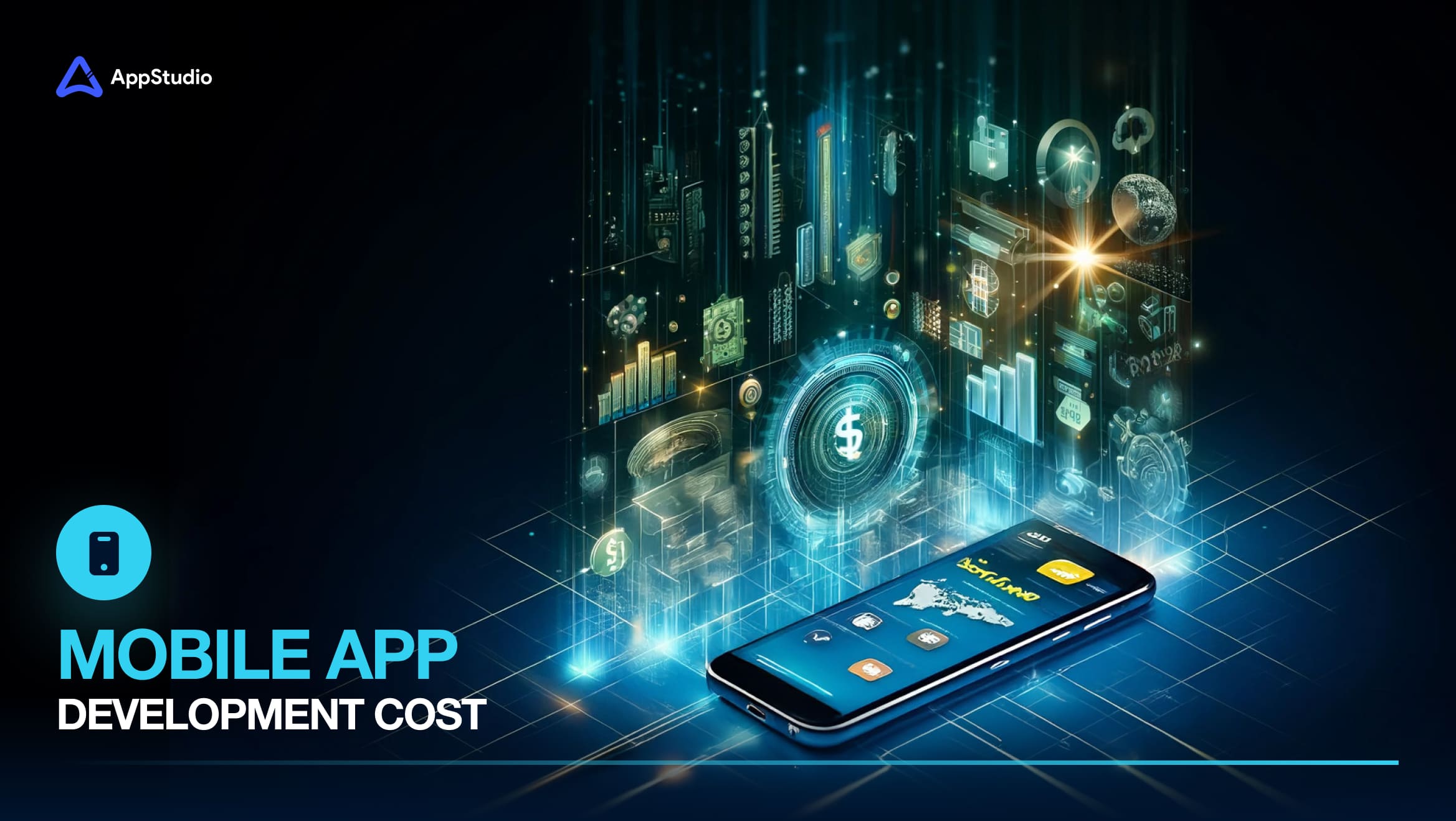It may seem unbelievable, but there was a time when the idea of ordering food through mobile phones felt like a distant dream. As we navigate through 2024, we carry the worlds of Disney and Netflix right in our pockets. Isn’t that remarkable and ingenious? This transformation has been propelled by the evolution of app development, where mobile developers have turned seemingly impossible ideas into everyday realities. In today’s fast-paced environment, having a smartphone filled with diverse applications has become essential, and the range of apps available on the PlayStore and AppStore, covering everything from A to Z, underscores the importance of this ongoing app creation journey.
Businesses are increasingly adopting a mobile-first approach, seizing the vast opportunities presented by mobile applications. According to eMarketer, users in the U.S. spend about 90% of their mobile time on apps. The surge in app downloads is equally staggering. In 2021, global app downloads reached approximately 230 billion, a significant rise from 140 billion in 2016.
As consumer demand grows, so does the global mobile app market, which is expected to expand from over $200 billion by the end of 2022 to an estimated $565 billion by 2030. This makes the mobile app development process a lucrative and strategic area for businesses across various sectors, from FinTech to eCommerce.
At AppStudio, we understand the nuances of the mobile app development process. Our team of experts has crafted an in-depth blog to guide you through everything you need to know about creating mobile apps, from the basic concepts to detailed steps in the mobile app development process.
To kick things off, let’s explore what mobile app development really entails. We’ll then explore the specific phases of the mobile app development process, offering insights into each step.
Mobile App Development Process- An Overview
The process for mobile app development (MAD) encompasses the entire lifecycle of creating an application, starting from the initial concept and design through to the final development and implementation. According to Flora, H.K., Wang, X., and Chande, S.V. (2014), the process for mobile app development is distinct from conventional software development due to its deep requirement for understanding the unique aspects of mobile applications. They argue that the unique characteristics of mobile applications—such as functionality, reliability, flexibility, accessibility, portability, efficiency, maintainability, usability, and responsiveness—must be continuously refined to meet user needs, setting it apart from traditional desktop software development.
Did you know that the concept of mobile applications dates back to the late 1970s? It began with the introduction of the first automated cellular network in cars in 1979 and was followed by the launch of the Motorola DynaTAC 8000X, the first commercial mobile phone. This historical context sets the stage for understanding the evolution and importance of today’s mobile app development process.
Related reading: Application Development: Tips & Tricks!
Steps to Mobile App Development Process
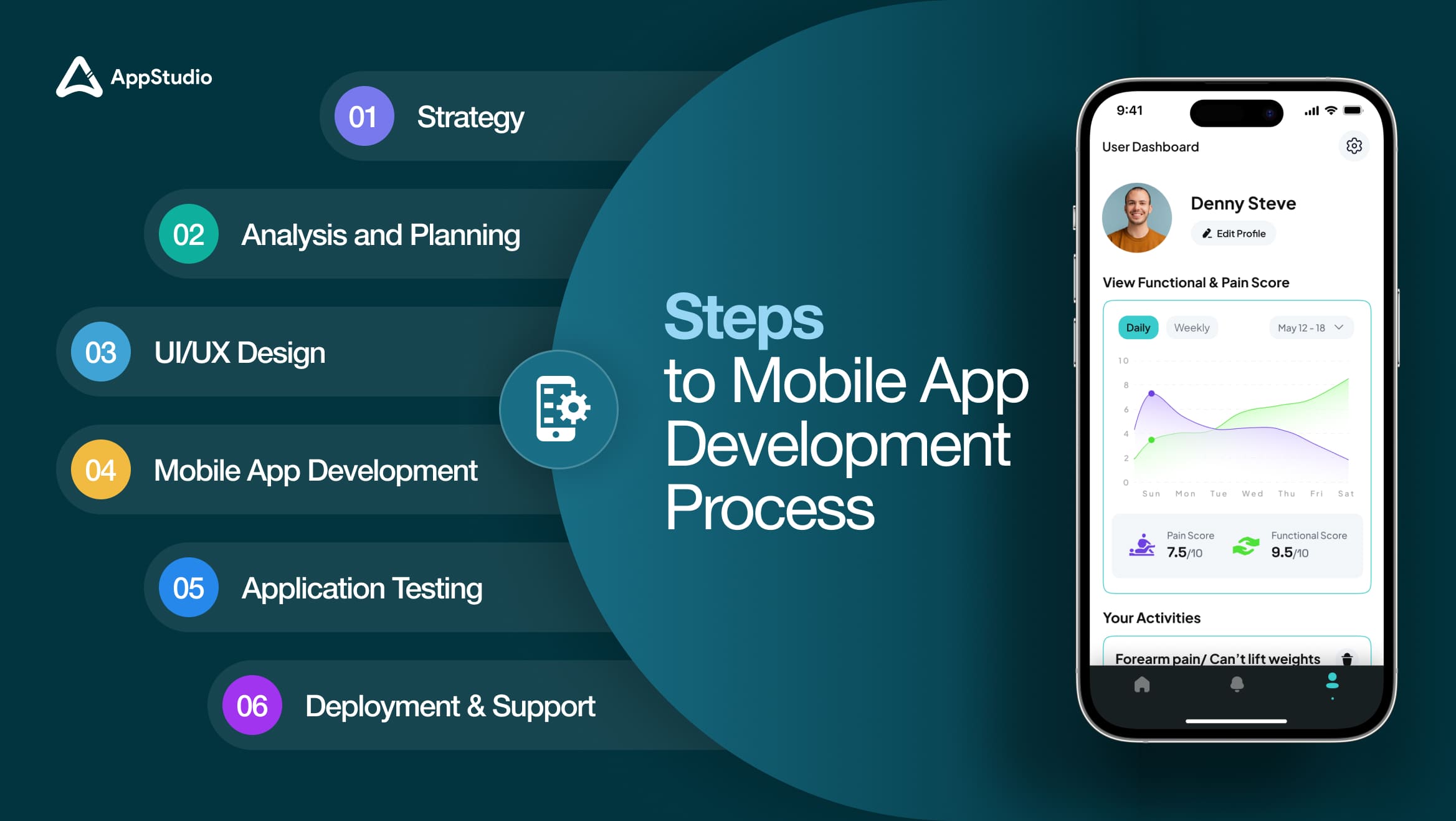
Navigating the steps to mobile app development is essential for achieving success in today’s tech-driven market. Each step from concept to launch plays a crucial role in ensuring the app meets its intended goals and provides a high-quality user experience. Here, we’ll explore the comprehensive stages involved in creating a successful mobile application.
Strategy
The journey begins with a strategic plan, which is the first crucial step involved in mobile app development. The strategy phase helps you understand how your business could benefit from a mobile app and identifies the potential advantages for your customers, employees, or partners. Each app has unique objectives that tailor the mobility strategy during the development process for mobile apps. A robust strategy answers the ‘why’ behind your mobile initiative, helping to guide the development process.
During this phase, you will:
- Define your app’s purpose.
- Identify your target audience.
- Research your competitors.
- Set clear goals and objectives.
The cost of mobile app development typically ranges from $150,000 to $200,000 and may take four to six months to complete. A well-defined strategy sharpens your app concept and prepares you for the subsequent steps in mobile app development.
Analysis and Planning
This stage transforms your app idea into an actionable project. Begin by defining use cases and capturing detailed functional requirements. Then, develop a product roadmap, prioritizing app requirements and organizing them into delivery milestones. Given the time, resources, and budget constraints, determine your minimum viable product (MVP) and prioritize it for the initial launch.
Key tasks include:
- Identifying the necessary skills for your app development team.
- Through comprehensive research, you can ensure your app’s name is unique across app stores.
For apps targeting both iOS and Android platforms, your team should include developers skilled in both operating systems. For simpler applications, consider using cross-platform technologies like React Native or Flutter.
UI/UX Design
The goal of designing a mobile app process is to deliver seamless and user-friendly experiences. Effective UI design fosters early adoption, while thoughtful UX keeps users engaged.
Steps to develop a mobile app in design include:
- Information Architecture & Workflows: Outline the data your app will display and collect and how users will interact with it.
- Wireframes: Create low-fidelity mockups to establish your app’s layout.
- Style Guide: Set design standards to maintain consistency across your app’s visuals.
- Mockups: Refine a visual design by applying your style guide to the wireframes.
- Interactive Prototype: Build a prototype to simulate user experience and test functionality.
Mobile App Development
Continuing with detailed planning, this phase involves:
- Defining technical architecture.
- Choosing a technology stack.
- Setting development milestones.
Your app’s architecture should include the backend/server technology necessary for functionality, an API for secure data exchange, and a mobile app front end that users will interact with. Based on your app’s needs, consider different development approaches—native, cross-platform, or hybrid.
Application Testing
Comprehensive QA testing is vital in the steps of developing a mobile app to ensure it is stable, usable, and secure. Develop test cases that address all functional aspects of the app.
Tests should cover:
- User Experience Testing: Confirm the app’s UI matches the initial design.
- Functional Testing: Verify all features operate as expected.
- Performance Testing: Assess responsiveness, loading times, and resource usage.
- Security Testing: Secure your app against potential threats.
- Device and Platform Testing: Ensure broad compatibility across various devices and OS versions.
Deployment & Support
The final steps to develop a mobile app involve deploying your app to app stores, which requires a developer account. Package your app with distinct metadata to differentiate QA and production versions. Post-launch, continuously support and update your app based on user feedback and new requirements. This ongoing support is crucial for maintaining the relevance and effectiveness of your mobile application in a competitive market.
Related reading: How to Plan Mobile App Development Project
How Long Does the Process of Mobile App Development Take?
The timeframe for developing a mobile application can vary significantly, as each project has its unique set of requirements and challenges. Here’s a detailed look at the factors that influence how long the mobile app creation process might take:
- Team Size: The size of the development team is a crucial factor. A larger team can typically move faster through the process for developing mobile apps because tasks can be distributed among more people, leading to faster implementation and problem-solving. Conversely, while potentially more coordinated, a smaller team might progress more slowly due to limited human resources.
- Feature Complexity and Number: The scope of the application plays a significant role. A simple app with just a few basic features can be developed much more quickly than a complex application loaded with advanced functionalities. Each additional feature adds layers of complexity, requiring more time for planning, implementation, testing, and refinement.
- Technology Selection: The technologies chosen to build the app—ranging from the programming language to the development frameworks and tools—can also impact the timeline. Some tech stacks are designed for rapid development and may come with pre-built functionalities that speed up the process, whereas others might require more custom coding and longer debugging sessions, extending the development process for a mobile app.
- Design Intricacies: The design is not just about aesthetics; it includes the user interface (UI) and user experience (UX) design, which are pivotal in determining how intuitive and engaging the app is. Complex designs with custom animations, intricate layouts, and advanced user interactions can significantly lengthen the development timeline. Every layer of design sophistication needs careful integration with the app’s functionality, which can be time-consuming.
- External Factors: Variables such as force majeure events (e.g., natural disasters, economic downturns) or unexpected changes in product requirements can disrupt even the most well-planned projects. These events might force the team to revisit and revise the entire process of mobile app development, leading to delays.
Despite the variability, development teams can provide rough estimates based on the app’s complexity:
- Simple apps may take a few months to develop.
- Moderate apps with more functions and moderate design features might take anywhere from 6 to 12 months.
- Complex apps, such as those requiring backend integration, advanced technologies, and complex UI/UX, could take a year or more.
It is advisable to contact a reputable development company such as Appstudio for an accurate estimate tailored to your specific project. We can evaluate all these factors about your requirements and give you a more precise timeline. This direct consultation helps ensure that the expectations are clear and realistic, aligning the process for mobile app development with your business objectives and market launch strategy.
Understanding the Costs Involved in the Mobile App Development Process
The costs and complexities of developing a mobile application can vary widely based on functionality and other critical factors. This insight helps debunk the common myth perpetuated by the gig economy and some media stories that mobile apps can be built quickly for less than $5,000. Realistically, even a low-complexity mobile app demands a skilled team and a well-organized mobile app development process.
Moreover, the idea that successful apps are inexpensive and easy to create is far from the truth. Based on our extensive experience, the average mobile app development process cost typically ranges between $150,000 and $200,000. For more sophisticated applications, such as pilot or MVP versions of widely recognized apps like Instagram, Uber, and Airbnb, development costs can soar from $200,000 to $615,000.
The price of app development largely depends on the developers’ involvement and the steps in mobile app development they must navigate. Options vary widely; you might choose a full-cycle agency or an app developer to custom-build or complete ongoing projects. Alternatively, no-code or low-code platforms offer a more budget-friendly solution through ready-made app builders. Pursuing in-house development presents a viable option for organizations with sufficient resources, financial capability, and a need for tailored solutions. However, significant investment is required in both onboarding and integrating new staff.
Contact AppStudio for a detailed estimate of your mobile app’s cost. Our experts are ready to provide comprehensive insights tailored to your specific needs and help you navigate the cost-effective options available.
Related reading: What are The Primary Steps in Developing A Mobile
Best Practices for Streamlining the Mobile App Development Process
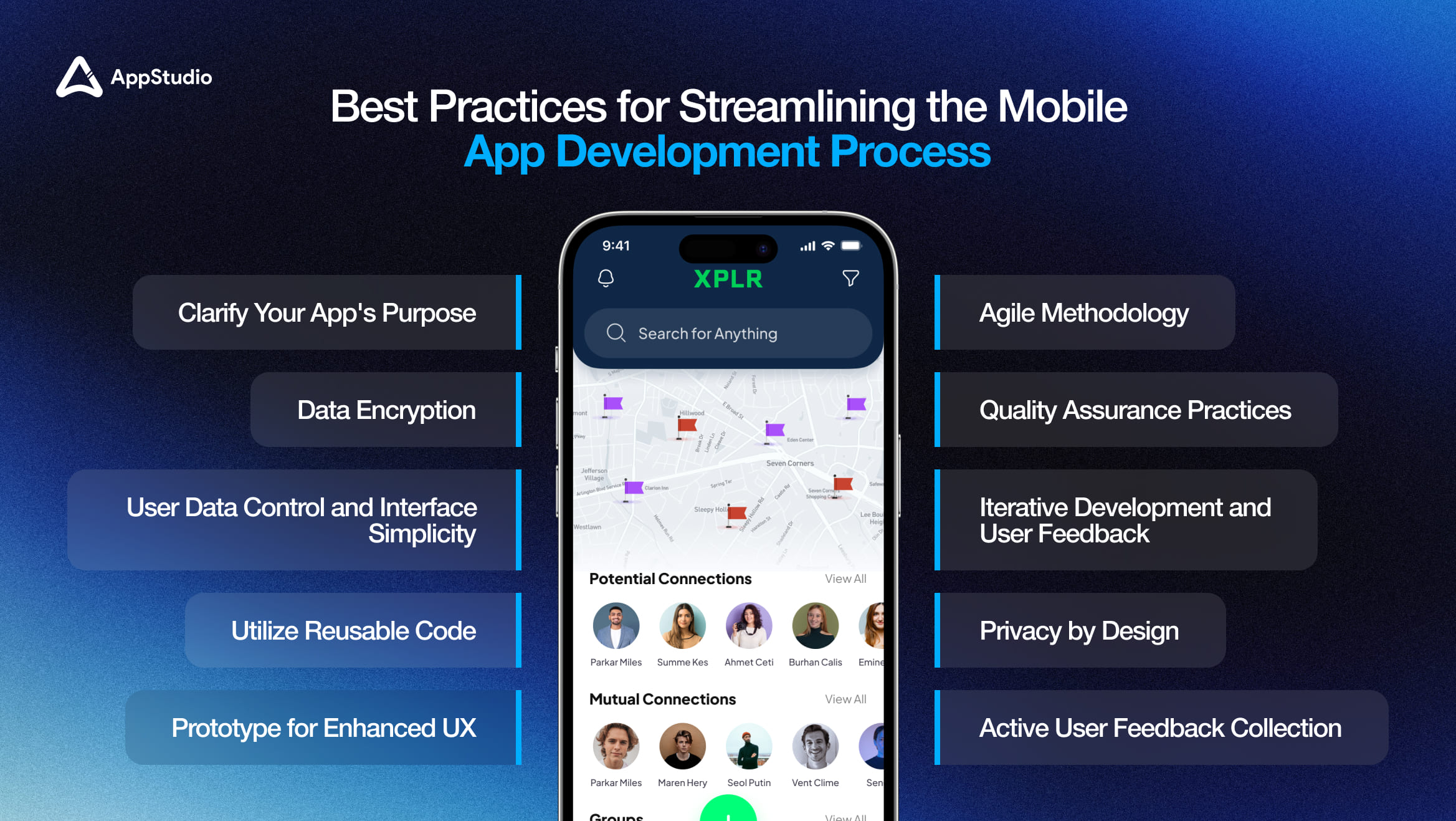
In the fast-paced world of mobile app development, following established best practices can greatly improve your projects’ productivity and success. Below are key practices refined through industry insights:
- Clarify Your App’s Purpose: Establish a clear and unique reason for your app’s existence that differentiates it from existing apps. This foundation will guide the entire process for mobile app development.
- User Data Control and Interface Simplicity: Empower users by giving them control over their data while maintaining a simple and clear interface. This balance is crucial for user retention and satisfaction.
- Iterative Development and User Feedback: Engage in continuous iterations based on user feedback and performance reviews. This approach is integral to refining the app through the developing a mobile app process.
- Prototype for Enhanced UX: Develop a prototype early in the development cycle to solidify the user experience (UX) design and ensure the app is both functional and user-friendly.
- Utilize Reusable Code: Speed up development by employing reusable code and maintaining a lightweight feature set. This practice not only saves time but also increases the agility of your development team.
- Agile Methodology: Customize Agile development practices to suit your team’s specific dynamics and project requirements. This allows for flexibility and rapid adjustments based on ongoing testing and feedback.
- Quality Assurance Practices: Implement rigorous quality assurance practices, such as Test-Driven Development (TTD), pair programming, and regular code reviews. These practices help maintain high code quality and robust app performance.
- Data Encryption: Strong encryption protocols ensure the security of sensitive data transmitted over unsecured networks. This is critical for protecting user information and maintaining trust.
- Privacy by Design: Build privacy into the app from the ground up, offering users clear communication, simple language, and meaningful choices regarding their data.
- Leverage Analytics: Use analytics tools to monitor app performance and user engagement continuously. This data is invaluable for making informed adjustments and improvements.
- Active User Feedback Collection: Regularly collect and analyze feedback through various channels such as emails, social media, and direct user feedback. This input is essential for iterative development and user-centric enhancements.
By integrating these practices, developers can streamline the mobile app development process and enhance the overall user experience, leading to higher engagement and satisfaction.
Top 11 Trends in Mobile App Development for 2025
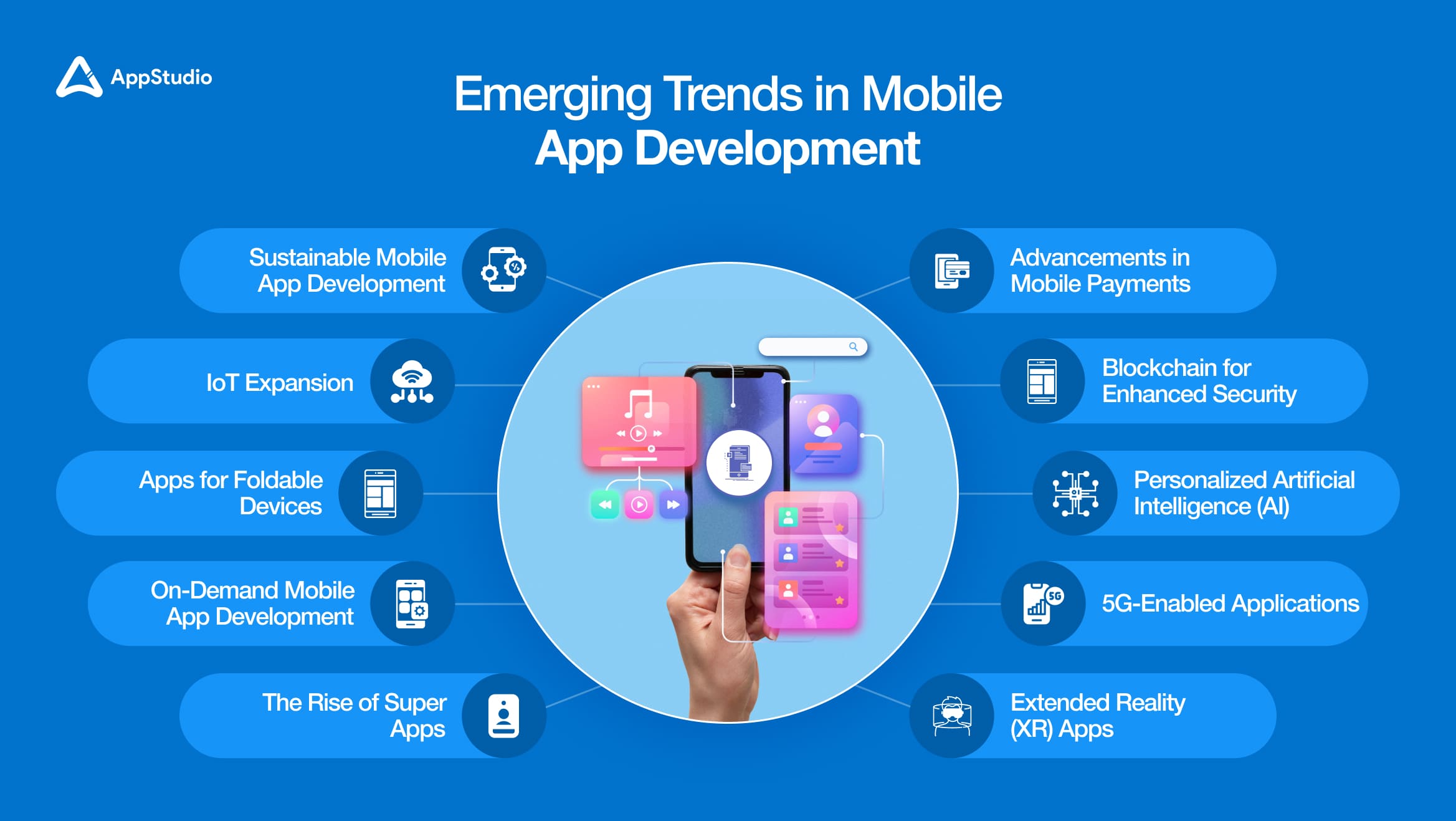
1. Advancements in Mobile Payments
As mobile payment technologies evolve, 2025 will see a rise in the use of cryptocurrencies and digital wallets, which will enhance transaction speed, security, and convenience for users.
2. Blockchain for Enhanced Security
The integration of Blockchain technology is increasing in mobile apps, especially for securing transactions in sectors like finance and healthcare. This decentralized approach is key to preventing data manipulation and fraud.
3. Personalized Artificial Intelligence (AI)
AI continues to tailor the mobile experience for individual users by analyzing their behaviors and preferences. This trend is transforming user engagement by providing personalized interactions across various app genres.
4. 5G-Enabled Applications
With 5G technology becoming more widespread, mobile apps will leverage this advanced connectivity to offer enhanced experiences, particularly in VR and AR, driving significant growth in mobile gaming and media consumption.
5. Extended Reality (XR) Apps
XR is merging AR, VR, and MR to create immersive experiences that enhance user interaction with digital environments. This is impacting sectors such as gaming, education, and real estate.
6. IoT Expansion
The integration of IoT with mobile apps is set to expand dramatically. IoT app development will control a vast array of devices, from smart home systems to industrial machinery, making them crucial for a broad spectrum of daily interactions.
7. Apps for Foldable Devices
As foldable devices gain market traction, apps will need to adapt to changing screen sizes and user interfaces, enhancing multitasking capabilities and media consumption on larger, more versatile screens.
8. On-Demand Mobile App Development
On-demand apps are rapidly growing, providing immediate services and products to users. This trend is expanding into new sectors, including healthcare and pet care, driven by consumer demand for quick and convenient solutions.
9. The Rise of Super Apps
Super apps are set to simplify the mobile landscape by combining numerous functionalities, such as shopping, banking, and social networking, into a single platform, particularly in Asian markets.
10. Development of Metaverse Apps
The metaverse is prompting developers to create new types of apps that blend AR, VR, and other digital experiences to enhance social and commercial interactions in immersive digital spaces.
11. Sustainable Mobile App Development
Environmental considerations are shaping mobile app development, with a focus on energy efficiency and sustainable practices. Apps are increasingly supporting eco-friendly actions, such as tracking carbon footprints.
These trends highlight the ongoing innovation in mobile app development and outline the steps in the mobile app development process that app developers will need to consider as they plan and execute projects in an increasingly digital world.
Related reading: What Are the Challenges in Mobile App Development
How AppStudio Can Help You Master the Mobile App Development Process
We are renowned for our comprehensive approach to mobile app development, which encompasses everything from initial concept to final deployment, ensuring each app is tailored to meet specific client needs. Here’s how we can assist in refining your mobile app development journey:
- Industry-Specific Solutions: We develop custom software tailored to sectors like healthcare, finance, and retail, addressing unique industry challenges and boosting business performance.
- Advanced Technologies: We utilize cutting-edge technologies such as AR/VR, IoT, and Blockchain to enhance app functionality and user engagement, keeping your applications competitive.
- Agile Development Process: Our agile methodology supports flexible planning and continual improvements, ensuring an efficient and adaptable development process.
- Quality and Security Focus: We prioritize rigorous quality assurance and robust security protocols to deliver reliable, secure, and high-quality mobile apps.
- Customized Solutions: We are dedicated to understanding each client’s unique needs. We provide customized solutions that align with your business objectives, driving tangible results.
- Support and Maintenance: We offer comprehensive post-launch support, including updates and bug fixes, to maintain smooth app functionality and keep pace with technological advancements.
By partnering with us, businesses can expect a seamless and productive mobile app development experience that not only meets but exceeds their expectations. This commitment to quality and client satisfaction positions us as a leader in the mobile app development sector.
Conclusion
The world of mobile app development is dynamic and ever-evolving, demanding technical expertise and a strategic approach to navigate successfully. From harnessing the latest in AR/VR, IoT, and blockchain technologies to implementing agile development methodologies, businesses must adapt to keep pace with technological advancements and changing user expectations.
Emphasizing quality, security, and user-centric designs is crucial. Moreover, staying informed about emerging trends and continuously iterating based on user feedback can greatly enhance the effectiveness and competitiveness of mobile applications. As businesses look forward to expanding their digital footprint, understanding these key components and strategies in mobile app development becomes vital for success in this digital era.
Frequently Asked Questions
The key steps in mobile app development include ideation and strategy, market research, UI/UX design, app development, testing, and deployment. Each step is crucial in ensuring the app meets user needs and business objectives.
Certainly! The step-by-step process of mobile app development starts with defining the app’s purpose and scope. Next is designing the app’s architecture and user interface, followed by coding and development. After development, the app undergoes rigorous testing before finally being launched and maintained post-launch.
In the initial stages, focus on thoroughly understanding user needs and market demands. This includes defining objectives, identifying the target audience, and conducting competitive analysis. These considerations are foundational in effectively shaping the subsequent mobile app development steps.
Iterative revisions are crucial and typically occur after initial testing phases. They involve refining the app based on user feedback and performance data. This step ensures the app remains relevant and continues to meet user expectations as it evolves.
Common challenges include staying within budget and timelines, coping with changing market trends, ensuring app security, and managing user expectations. Effectively addressing these challenges is crucial for the smooth progression of mobile app development steps.
User feedback is vital as it provides direct insights into user experiences and app functionality. Integrating this feedback during the development and post-launch phases helps enhance app quality and user satisfaction and supports continuous improvement in the development cycle.
